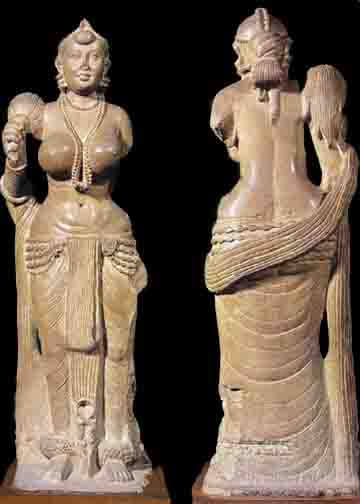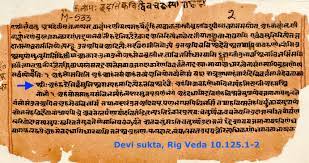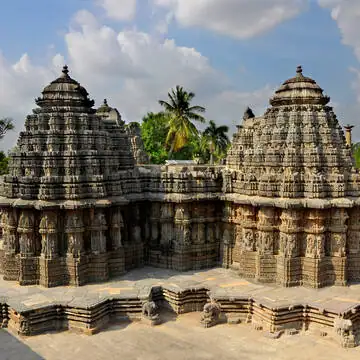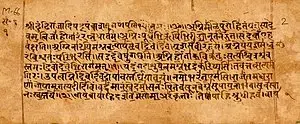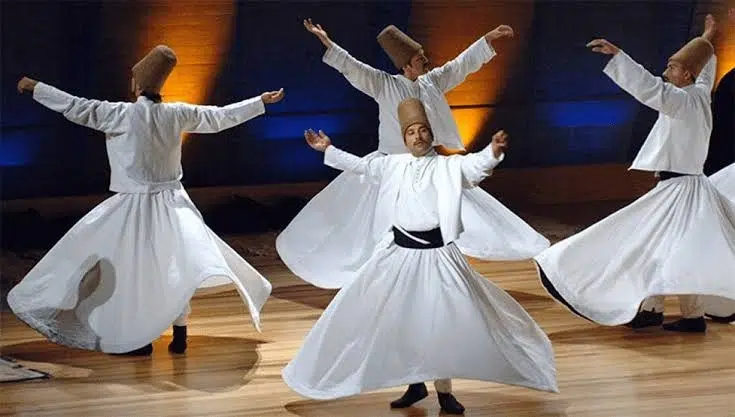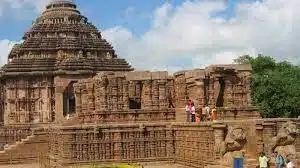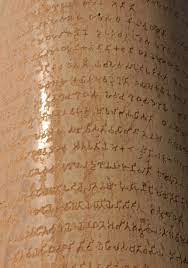Classical Dances of India
Classical dances are all about technicalities and strict rules. Natya Shastra written by Bharat Muni forms the foundation of technicalities of all the classical dance forms . According to Natya shastra, each dance form is related to a Guru (Teacher) and he/she transfers that knowledge of dance to a Shishya (Student). This ‘guru-shishya parampara’ forms the core of Indian classical art form.
There are two basic aspects of Natya Shastra: Lasya & Tandava.
- Lasya : It denotes grace, bhava, rasa and abhinaya. It is symbolic to the feminine features of dance as an art form.
- Tandav : This is symbolic to the male aspects of dance and has more emphasis on rhythm and movement.
There are three basic elements:
- Nritta – These are the basic dance steps and are performed rhythmically but devoid of any expression or mood.
- Natya – It means dramatic representations and refers to the story that is elaborated through the dance recital.
- Nritya – refers to the sentiment and the emotions evoked through dance. It includes the mime and the different methods of expression including mudras in the dance.
Origin of classical dances
- Most of the classical dance forms originated in temples. Worshipping was the main aim. Although every dance form evolved from different regions, their roots are the same.
- The roots can be traced from the Sanskrit text – ‘Natya Shastra’. The first compilation of Natya Shastra is dated between 200BCE and 200CE.
- As time passed, artists improvised many classical dances which resulted in the present day forms. Today, Indian classical dances are very popular dance all over the world.
The 8 Rasas
Natya Shastra speaks of Eight Rasas. They are as following:
- Shringar: Love
- Hasya: Humorous
- Karuna: Sorrow
- Raudra: Anger
- Veer: Heroism
- Bhayanak: Fear
- Bibhats: Disgust
- Adbhoot: Wonder
*Later Abhinav Gupta added a ninth one to it, Shanta: Peace.
Number of Classical Dance: 8 or 9?
Presently, as per Sangeet Natak Akademi, there exist eight classical dance forms in India, which include Bharatnatyam, Kuchipudi, Kathakali, Mohiniattam, Odissi, Manipuri, Kathak and Sattriya. However, the Ministry of Culture also considers Chhau Dance as a classical dance of India, making the total number of classical dances in India as nine.
List of Classical Dances of India :
Bharatnatyam (Tamil Nadu)
- The word meaning of Bharatnatyam
- Bha: Bhava which means emotions
- Ra: Rag meaning musical notes.
- Ta: Taal means the Rhythm.
- Natyam: The Sanskrit word for Drama.
- The Abhinaya Darpana by Nandikesvara is one of the main sources of textual material, for the study of the technique and grammar of body movement in Bharatnatyam Dance.
- Bharatnatyam dance is known to be ekaharya, where one dancer takes on many roles in a single performance.
- The dance involves transitional movements of leg, hip and arm. Expressive eye movements and hand gestures are used to convey emotions.
- The accompanying orchestra consists of a vocalist, a mridangam player, violinist or veena player, a flautist and a cymbal player. The person who conducts the dance recitation is the Nattuvanar.
- In its usual form the dance is generally broken into seven main parts – Alarippu, Jatiswaran, Shabda, Varna, Pada, Thillana and Sloka.
- Bharatnatyam poses are depicted on the gopurams of the Chidambaram temple (Tamil Nadu).
- Silappatikaram (where its existence was mentioned in this ancient Tamil epic).
- Brihaddeshwara temple was a major center for Bharatnatyam since 1000CE.
- E. Krishna Iyer and Rukmini Devi Arundale had played a significant role in helping the dance regain its lost popularity and position.
Kathakali (Kerala)
- ‘Katha’= Story or tale, ‘Kali’= Performance and Art.
- Its roots are in ancient ‘Kutiyattam’ (Classical Sanskrit Dance Drama) and ‘Krishnattam’ (Dance-Drama depicting Stories of Hindu God Krishna).
- Movements in Kathakali are influenced by ancient martial arts and athletic tradition. It is basically a Dance-Drama.
- Kathakali was traditionally a male-dominated dance and now females are too welcomed in this dance form.
- Heavy make-up and stunning costumes (elaborate masks, huge skirts and big head-dresses) are used.
- The dancers enact the roles (kings, gods, demons etc.) of the stories with particular make-up and costume, the vocalists narrate the legend and the percussionists play the musical instruments.
- Different facial colours indicate different mental stages & character, e.g. green – nobility, black – wicked, red patches – combining royalty & evil.
- Hand gestures, facial expressions and eye movements are important.
- Weight of the body is on the outer edges of the feet which are slightly bent and curved.
- Ramankutty Nair and Kalamandalam Gopi were the prominent artists.
Kuchipudi (Andhra Pradesh)

- The Kuchipudi was originated from the place named ‘Kuchipudi’ in Krishna district of Andhra Pradesh around 3rd century BCE, Kuchipudi Dance form is a long-established dance-drama style.
- In 17th century Kuchipudi style of Yakshagaana was conceived by Siddhendra Yogi. He was steeped in the literary Yakshagaana tradition being guided by his guru Teertha Narayana Yogi.
- It is performed as dance drama i.e. performance in groups and also as solo items.
- Costumes, ornaments and jewellery occupy an important place.
- The solo items are Manduka Shabdam (story of frog maiden), Balgopala Taranga (dance on the edges of brass plate with a pitcher full of water on head) and Tala Chitra Nritya (drawing pictures with dancing toes).
- Yamini Krishnamurthy and Raja Reddy are prominent dancers.
Mohiniyattam (Kerala)
- Mohiniyattam or dance of Mohini (an incarnation of Lord Vishnu) is the classical solo dance form of Kerala.
- Mohiniattam is Lasya inspired dance with soft, calm and gentle movements. Characterized as Feminine, usually done by women.
- The text ‘Hastha Lakshanadeepika’ is followed (for hand gestures and facial expressions) that has an elaborate description of mudras.
- References of Mohiniyattam can be found in the texts Vyavaharamala written in 1709 by Mazhamagalam Narayanan Namputiri and in Ghoshayatra, written later by poet Kunjan Nambiar.
- It was structured into the present day classical format by the Travancore Kings, Maharaja Kartika Tirunal and his successor Maharaja Swati Tirunal (18th-19th century)
- Mostly a solo performance by girls with circular movements, delicate footsteps and subtle expressions.
- Movements have been borrowed from Nangiar Koothu and female folk dances Kaikottikali and the Tiruvatirakali.
- It has elements of Bharatanatyam (grace & elegance) and Kathakali (vigour) but is more erotic, lyrical and delicate.
- Realistic make-up and simple dressing (in Kasavu saree of Kerala) are used.
- Mohiniyattam has a unique White/Off-White Costume. The prominent one-sided hairstyle (bun) also called as ‘Kuduma’.
- The lyrics are in Manipravala (a medieval south Indian language combining Tamil-Malayalam and Sanskrit).
- Sunanda Nair and Pallavi Krishnan are the notable artists.
Odissi (Odisha)
- It has a combination of Lasya and Tandav. Graceful and mesmerizing, it appears like waves of the ocean.
- It has its mention in the oldest Sanskrit Text – Natya Shastra as Audramagdhi.
- In ancient days this dance form filled with Bhakti ras was a part of worship to God at Jagannath temples.
- Odissi is famous for its presentations on poet Jayadev’s fabulous work.
- Two styles of traditional Odissi
- Maharis (Devadasis or Temple Girls).
- Gotipua ( Performed by Boys).
- Termed as ‘mobile sculpture’ it incorporates two major postures – Tribhanga (the body is deflected at the neck, torso and the knees) and Chowk (a position imitating a square).
- Sonal Mansingh and Kelucharan Mohapatra are the eminent performers.
Kathak (North India)
- The word Kathak has been derived from the word Katha which means a story.
- It was primarily a temple or village performance wherein the dancers narrated stories from ancient scriptures.
- Kathak began evolving into a distinct mode of dance in the fifteenth and sixteenth centuries with the spread of the bhakti movement.
- The legends of Radha-Krishna were enacted in folk plays called rasa lila, which combined folk dance with the basic gestures of the kathak story-tellers.
- Under the Mughal emperors and their nobles, Kathak was performed in the court, where it acquired its present features and developed into a form of dance with a distinctive style.
- Under the patronage of Wajid Ali Shah, the last Nawab of Awadh, it grew into a major art form.
- Kathak is world famous for its spectacular footwork, amazing spins, Nazakat and Padhant (Chanting of bols, toda, tukdas by dancer himself and then performing). This is the distinctive feature of Kathak.
- It creates a nexus between the dancer and audience.
- The body movements are quite straight as compared to Bend movements of South Indian Dances.
- The heavy ghunghroos are worn by the Dancers.
- There is a wide variety of sounds are hidden in these ghunghroos like running train, heavy rains, Sound of Horse riding,( Ghode ki chaal) and much more. This adds more beauty to the performance.
- Four Gharanas of Kathak :
- These are the Jaipur, Lucknow, Raigarh and the Benares gharanas.
- These schools are named according to the geographical area in which they developed.
- Each has a slight difference in interpretation and repertoire and can be recognized from their presentations.
- Kathak is the only form of classical dance wedded to Hindustani or the North Indian music.
- Lady Leela Sokhey (Menaka) revived the classical style. Some prominent dancers include Birju Maharaj, Sitara Devi.
Sattriya (Assam)
- In the 15th century AD, Vaishnava saint of Assam, Shankaradeva introduced the Sattriya form of dance.
- Sattriya derives its name from the Vaishnava Monastries Known as Sattras.
- It focuses more on the devotional aspect of dance, It narrates the mythological stories of Vishnu.
- The dance form is performed in a group by male monks known as Bhokots as part of their daily rituals.
- Khol and Flute are the main instruments played in Sattriya dance.
- Rhythmic syllables and dance postures along with footwork has given greater emphasis in Sattriya dance.
- It combines the elements of Lasya and Tandava.
- There is a strict guideline laid down for the hand gestures and footwork in Sattriya dance.
- Gayan-Bhayanar Nach and Kharmanar Nach are two streams evolved in the modern times.
Manipuri (Manipur)
- The Manipuri dance form named after its region of origin, ‘Manipur’ is also known as ‘Jogai’.
- It was traditionally performed as a dance – drama on devotional songs, Manipuri showcases the love between Radha- Krishna through Raaslila.
- Manipuri is a combination of two culture- Indian and South-East Asian.
- The Manipuri dance form is categorized as Tandav or Lasya.
- The beautifully soft and graceful dance form, Manipuri has significant movements of hands and upper body.
- Another uniqueness of this dance form is that, while Ghunghroos (Bells) glorify the classical dances of India, they are not worn in Manipuri.
- Lai Haraoba is the earliest form of dance which forms the basis of all stylised dances in Manipur.
- Literally meaning – the merrymaking of the gods, it is performed as a ceremonial offering of song and dance.
- The principal performers are the maibas and maibis (priests and priestesses) who re-enact the theme of the creation of the world.
- The popular Rasleela dances of Manipur originated in the reign of 18th century King Bhagyachandra.
- Manipur dance has a large repertoire, however, the most popular forms are the Ras, the Sankirtana and the Thang-Ta.
- The Kirtan form of congregational singing accompanies the dance which is known as Sankirtana in Manipur.
- The male dancers play the Pung and Kartal while dancing.
Chhau
- The word ‘Chaya’ gives meaning to Chhau Dance. Chaya means shadow.
- As a mask dance, Chhau dance is denoted.
- Energetic martial art movements are basic feature of Chhau Dance
- Serpent Dance, Peacock Dance are a few narrations used in Chhau Dance
- There are three kinds of Chhau Dance:
- Saraikella – This Chhau Dance is famous in Jharkhand
- Mayurbhanj – This Chhau Dance is famous in Odisha
- Purulia – This Chhau Dance is famous in West Bengal
- Mayurbhanj Chhau Dance does not use masks.
- In 2010, Chhau Dance was inscribed in the UNESCO’s Representative List of Intangible Cultural Heritage of Humanity.

